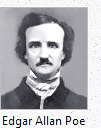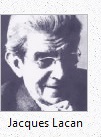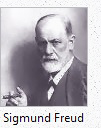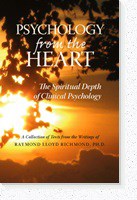 |
 |
Death —
and the Seduction of Despair |
About this Website |
Questions and Answers About Psychotherapy |
Books |
Your Hope
|
A
Round-
about
Beginning
 |
 WORK OF LITERATURE can often reveal deep
psychological truths even though the author may receive satisfaction from
the writing without fully understanding its psychological implications. And
even though school teachers and university professors may delight in asking
their students to explain what the author “really meant,” no one
can ever know with any certainty what was going on in the author’s
mind. WORK OF LITERATURE can often reveal deep
psychological truths even though the author may receive satisfaction from
the writing without fully understanding its psychological implications. And
even though school teachers and university professors may delight in asking
their students to explain what the author “really meant,” no one
can ever know with any certainty what was going on in the author’s
mind.
 In this regard, Edgar Allan
Poe wrote a fascinating short story, The Purloined Letter, a story of intrigue and desperation. In this regard, Edgar Allan
Poe wrote a fascinating short story, The Purloined Letter, a story of intrigue and desperation.
The intrigue
begins with a Queen watching helplessly in horror while a royal Minister
steals an incriminating letter of hers—right under her nose, and in
the very presence of the King—for purposes of blackmail. The story unfolds
as the hero, Dupin, manages in turn to steal the letter from the Minister
and hand it over to the Prefect of police—for a hefty fee, of
course—when the police fail in their own attempts to locate this
“purloined” letter the Queen so desperately wants back in her
possession. |
Introduction
 |
As I said before, it’s anyone’s guess how much
Poe understood the unconscious psychology of his characters
and their predicaments. Nevertheless, the story has profound psychological
implications—which lift it well above a mere detective story—or
I wouldn’t have spent so much time introducing it
here.
Brilliantly explained
by Jacques Lacan in his “Seminar on The
Purloined Letter,” these psychological implications not only touch
on the Freudian concept of repetition but they also apply to the topic
of this page: Death—and the Seduction of Despair. |
Repetition
 |
Lacan uses Poe’s text to help explain the repetition
automatism (Wiederholungszwang) described by Sigmund Freud in his
psychoanalytic theories.
|
What is
repetition? Well, consider the person who keeps picking abusive
“lovers,” or the person who starts projects and never finishes
them. Neither of these persons is likely to be deliberately seeking failure
and pain, so we speculate that they are stuck in a rut that leads them round
and round to repeat some unconscious desire. Freud
simply set about trying to understand the nature of this helpless bondage
to repeated anguish. |
|
Lacan’s
argument in his seminar centers on the role of the signifier in the
act of repetition. A signifier, he says, is “by nature” a “symbol
only of an absence.”
 That is, the signifier represents for us something else,
something not immediately present; as such, the signifier isn’t important
in itself—it’s valuable only for what it represents. Words are
signifiers, and words are composed of letters, and voilà, Poe’s
story is about a letter. A letter which signifies quite a bit. As the Prefect
of police describes it, “the disclosure of the document to a third person,
who shall be nameless, would bring in question the honor of a personage of
most exalted station.” Or, in language less diplomatic than that of
the Prefect, it would be the death of the Queen if the King found
out. That is, the signifier represents for us something else,
something not immediately present; as such, the signifier isn’t important
in itself—it’s valuable only for what it represents. Words are
signifiers, and words are composed of letters, and voilà, Poe’s
story is about a letter. A letter which signifies quite a bit. As the Prefect
of police describes it, “the disclosure of the document to a third person,
who shall be nameless, would bring in question the honor of a personage of
most exalted station.” Or, in language less diplomatic than that of
the Prefect, it would be the death of the Queen if the King found
out.
Hence, as Lacan
further notes, in being a symbol of an absence, the signifier “materializes
the agency of death.” Think about that. What is always missing from
life and yet always present? Death. Thus every signifier essentially hides
death from us while at the same time displaying it prominently in front of
us.
Is it any wonder
then, that the story of this unfortunate purloined letter, so intimately
connected with the threat of death, should also be so intimately connected
with its being repetitively hidden in plain view?
Thus we have
the two themes of Lacan’s Seminar, two themes of Poe’s story, and
the subject of this page: death, and its being repetitively hidden as we
frantically seek to display the vain psychological
defenses of life. |
The
Beginning
 |
Before leaving Lacan’s Seminar and Poe’s
“letter,” let’s note one final and very important point about
the theft of the letter in the first place. Lacan describes this theft as
an operation, as if the psychology of the theft were analogous to
a mathematical procedure. Why? Because in stealing the letter the Minister
substitutes another letter of his own, a letter that, once left behind, becomes
worthless. As such, this second letter can be thought of as a
remainder to the initial operation, a letter “abandoned by the
Minister, and which the Queen’s hand is now free to roll into a ball.”
In her anger and frustration, the “remainder” is nothing but
trash.
So why have I
called this section “The Beginning”?
Well, here we
have, displayed right before us, the beginning trauma of all life. Our
conception.
This might not
seem like much to you, but consider how you were conceived. How we all
were conceived. Through the passion of our parents, sperm and egg came together
to form a beginning embryo. Notice well: an embryo. To your parents, at your
conception, you were not “you.” You were not a “special”
person. No, nothing of the sort. Whoever you are, whatever you think you
are, however you want to be seen
in this world—none of this mattered to your parents. All they knew was
the passion of their desire.
Your parents’
desire may have been the desire for nothing more than the physical pleasure
of the moment, of which conception was—to use the terminology of scientific
medicine—just a “side
effect.” [1]
Thus you find your life stained by the reality of
being an “accident.”
Or your parents’ desire may have been the
fully-planned desire to have a baby. But, again, note well: a baby. If your
parents wanted a baby, they knew—and wanted—nothing of
you as a person; they just wanted “a baby.”
To the sexual
operation which created you, therefore, you—whether your conception
was planned or unplanned, and despite all your longing for a special
identity—are nothing but a
remainder.
And herein lies
all the desperation that life is heir to, because, once born, each child
will spend the remainder of its life hiding this unwanted reality from
itself.
We will waste
our lives seducing our despair. |
Repetition
Revisited
 |
At the end of his seminar, Lacan says that “a letter
always arrives at its destination.” Well, this may not be exactly true
in today’s world regarding letters delivered by the local post office,
but it is true in regard to letters—signifiers—in the
unconscious. A signifier always arrives at its unconscious destination. And here is where
death and repetition are joined. For there is always one dark part of the
unconscious—call it an
“ego state”—which knows the truth about the worthlessness of its
own social identifications. And no matter how much we may employ our
vain defenses to hide our despair about the emptiness of social constructs,
everything comes back to this part which
“knows.”
And what exactly
does it know? It “knows” death. It knows the haunting reality that
stands before us all with the power to wipe away in an instant everything
we think we are. And, for children of dysfunctional
families, it knows the unspoken but constant thought
that dances though their heads: “You don’t deserve to live and
so it would be better for others if you were dead.”
We dance round
in a ring and suppose,
But the Secret sits in the middle and knows. |
—Robert
Frost |
The secret—this
ugly treasure of a dark ego state—sits quietly as our defenses dance
round it in repetitive, unwitting homage.
From this dark
place, therefore, come all addictions.
All the alcohol and drugs, all the gambling, all the cigarettes, all the
sports, all the shopping, all the fashion, all the television, all the
entertainment, all the gluttony, all the sex that masquerades as love—all
the perversions—come
from this place as a way, like a vampire, to suck vicarious life from the
world around you.
From this dark
place comes all prejudice,
as a way to puff up your own value by demeaning others.
From this dark
place comes the urge to respond to hurt and insult with pride
and revenge, as a way to hurt others as you have been hurt.
From this dark
place comes the urge to savor the taste of death by taking risks. The thrill
of an adrenaline “rush” or the social “status” of making
yourself seen as a rebel serves as a flash of illusion to hide your own dark
emptiness—or, in the case of adolescents, the
spiritual emptiness of your family.
From this dark
place comes the sly grin of disobedience,
as a way to scorn the world that scorns your humanity when you are made into
a mere pawn of consumerism.
From this dark
place comes the preoccupation with medical problems (as in
Somatization Disorder and
Hypochondriasis). The constant attention you receive
through medical treatment becomes a way to fill up the emptiness of feeling
that you “shouldn’t be alive.” But as long as your inner despair
remains unconscious—and untreated
psychologically—all the time and money spent on medical care is like
pouring water into a sieve.
From this dark
place comes all masochistic self-sabotage,
whereby you manage to mess things up just as you have the chance to succeed.
You procrastinate, you miss a deadline, you fail to follow directions, you
get lost on the way to an appointment, you forget to mail an important letter,
and so on.
From this dark
place comes the impulse to self-mutilation.
From this dark
place comes all suicide.
|
Consider
a woman despairingly pregnant with a child she, or the father, doesn’t want.
Right in the womb that developing fetus will be “infected” psychologically
with the belief that “It would be better if you were dead.”
Or maybe a woman
is too emotionally immature to attend to her infant’s needs. As that
infant struggles with the dark terror of its neglect, it will be
“infected” psychologically with the belief that “It would
be better if you were dead.”
Or maybe the
child is a living “accident,” the unanticipated result of raw sexual
pleasure stripped of any responsibility to reproduction. As that child struggles
with lonely isolation, it will be “infected” psychologically with
the belief that “It would be better if you were dead.”
Or maybe the
child suffers the daily reality of child abuse. The
abuse can amplify the belief that you are nothing but “garbage” to be
used for someone’s sexual pleasure—a piece of flesh to be used and then
discarded like trash. The usual unconscious psychological defense against
this despair is to actually make yourself into a piece of sexual garbage.
Think about it. Most prostitutes were sexually abused as children. Does that
say enough? |
|
Yes, the secret
sits in the middle and knows. And a dark part of us cries out in pain as
the seduction of our despair—ceaselessly and repetitively—returns
unto it.
|
 In
his later writing, Sigmund Freud theorized about a death instinct
(also referred to as a death wish), which has some remote similarity
to what I’m describing here. In
his later writing, Sigmund Freud theorized about a death instinct
(also referred to as a death wish), which has some remote similarity
to what I’m describing here.
Many psychoanalysts after
Freud have used the term thanatos (which in Greek mythology refers to death
personified) to describe this “instinct,” but Freud never liked the term,
nor did he ever provide another name for it. Moreover, concerned as he was with
reducing religion to sexuality and biology, he could have never grasped the concept
of rebirth which transcends all sexuality. |
|
|
Rebirth
 |
From the eyes of this dark ego state, then, the pain of
insignificance and meaninglessness can be answered only with self-destruction.
And, if you don’t understand to the very depths of your heart the nature
of this blind despair you will be wretchedly caught in its endless
repetition.
There are no
social or political organizations you can join, nations to which you can
avow citizenship, cultures in which you can take pride, languages you can
speak, or identifications in which you can dress yourself that have the power
to free you from this shadowy despair.
You can’t
buy your release with wealth, seize it with power, or seduce it with
romance.
The only solution
is to recognize—and accept—that there is no humanistic solution.
In our basest reality, we are just alimentary canals encased in flesh-covered
skeletons, and it’s useless to make a fetish of the body because it’s
impossible to find mystical meaning
in the biological/sexual functions of body. We were conceived through petty
desire, and, left to ourselves, in the midst of empty social constructs,
we are nothing but objects to be used and manipulated by the social world
around us.
But that is not
the end of the story.
If you choose
to believe it, each of us has a
soul
that, by the grace of pure, selfless love, is unique. And it does
mean something—not to the social world, but to love itself. And so,
despite death and despair, we have the choice of rebirth, a new
“birth” of meaning and purpose that are not structured in vain
self-satisfaction but in a humble letting go of obsession with the
self.
 The concept
of rebirth has been a part of religion for ages. It even entered into
psychology through The concept
of rebirth has been a part of religion for ages. It even entered into
psychology through
 Carl Jung’s research into religion and alchemy.
But the problem with Jung’s ideas—and with his followers such as
Joseph Campbell—is that no matter which path to psychological
“rebirth” is pointed out, no matter which myth is laid out on the
table with all the other myths, they are all nothing but human signifiers,
each one as empty as the one lying next to it. Carl Jung’s research into religion and alchemy.
But the problem with Jung’s ideas—and with his followers such as
Joseph Campbell—is that no matter which path to psychological
“rebirth” is pointed out, no matter which myth is laid out on the
table with all the other myths, they are all nothing but human signifiers,
each one as empty as the one lying next to it.
All these myths
make one grave mistake. All these myths hold out the lie that you can find
value in life by seeking it through your own
psychology.
 True rebirth demands something
more than psychology and more than myth. It demands “death”: death
of all self-importance, death of all we “think” we are, death of
all pride in our illusory identities.
It is the death described so well through the ages by religious mystics such
as Saint John of the
Cross.[2,3]
It is the death of all attempts to seduce your
despair. True rebirth demands something
more than psychology and more than myth. It demands “death”: death
of all self-importance, death of all we “think” we are, death of
all pride in our illusory identities.
It is the death described so well through the ages by religious mystics such
as Saint John of the
Cross.[2,3]
It is the death of all attempts to seduce your
despair.
From this death
comes spiritual healing, the end to all the frantic defenses against your vulnerability
and the beginning of the acceptance of vulnerability itself as the very strength
of real love. It’s a rebirth into honest humility,
the only path that leads to meaningful life, mental health, and genuine
religion.
|
You might ask,
“Can this be done without becoming a hermit, or ascetic? Can one continue
to conduct business, or other worldly activities without the desire for
self-satisfaction?” Well, yes it can be done. In short, it means that
you do everything you can to develop your talents as fully as possible, but
that you put those talents to use in service to others, not for the sake
of your own personal pleasure, wealth, status, honor, or prestige. |
|
And, sadly enough,
all those who haven’t learned this lesson—even the most outwardly
religious of us still trapped in false
spirituality—will fall, time and time again, into the hands of that
dark ego state in which we, like a useless letter, are rolled angrily into
a ball of trash. |
Lessons
In
Healing
And
Hope
 |
 Psychology from the
Heart Psychology from the
Heart
The Spiritual Depth of Clinical Psychology
A collection of
texts from the writings of
Raymond Lloyd Richmond, Ph.D.
More
information |
Gratitude
 |
Has this web page been helpful? Then please help support this
website in gratitude, as a “down-payment” on the success of your
hopes and dreams!
|

Notes:
1.
And, if you have been graced with the life and intelligence to be able to
read this, be grateful that your mother did not have an abortion to get rid
of you, the fetus whom she could have perceived at the time as a mere unwanted
medical nuisance.
2. St. John of the
Cross, “The Ascent of Mount Carmel.” In
The
Collected Works of St. John of the Cross, trans. K. Kavanaugh and
O. Rodriguez (Washington, DC: ICS Publications, 1991).
3. St. John of the
Cross,
“The
Dark Night.” In
The
Collected Works of St. John of the Cross, trans. K. Kavanaugh and
O. Rodriguez (Washington, DC: ICS Publications, 1991).
Additional
Resources
Lacan:
Lacan’s Seminar on The Purloined Letter
The Lacanian School
of Psychoanalysis in the San Francisco Bay area, offers training
in Lacanian psychoanalysis.
The San Francisco Society
for Lacanian Studies provides lectures and information about Lacanian
psychoanalysis.
The Purloined
Letter:
The Purloined Letter by
Edgar Allan Poe, from The Literature Network.
St. John of the
Cross:
JUAN DE
LA CRUZ
Related pages within A Guide to Psychology
and its Practice:
Anger: Insult,
Revenge, and Forgiveness
Depression and
Suicide
Fear
Identity and
Loneliness
Personality
Questions and Answers
about Psychotherapy
Sexuality—and
Love
Spiritual
Healing
Terrorism and
Psychology
The Unconscious
Treatment
Philosophy
CONTACT ME
INDEX of all subjects
on this website
SEARCH this
website |
|
A Guide
to Psychology and its Practice |
www.GuideToPsychology.com |
|
Copyright © 1997-2024 Raymond
Lloyd Richmond, Ph.D. All rights reserved.
San Francisco |
|
All material on this website is
copyrighted. You may copy or print selections for your private, personal
use only.
Any other reproduction or distribution without my
permission is prohibited. |
|
|